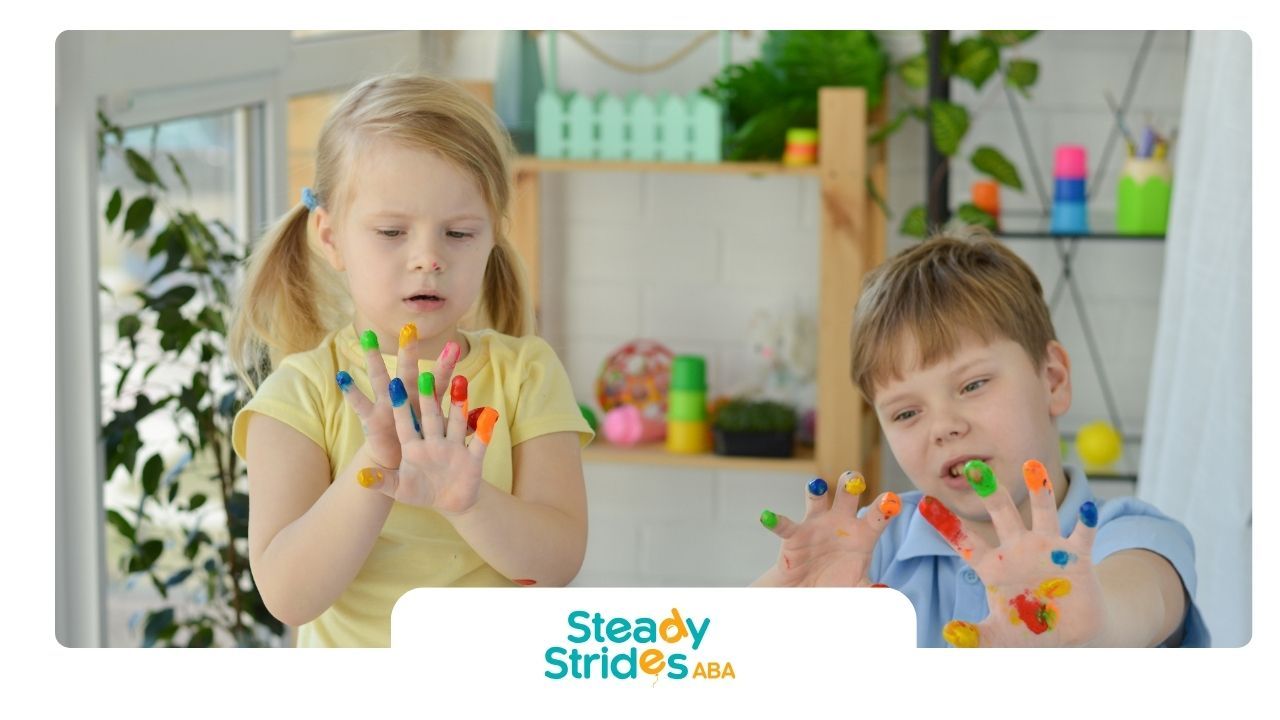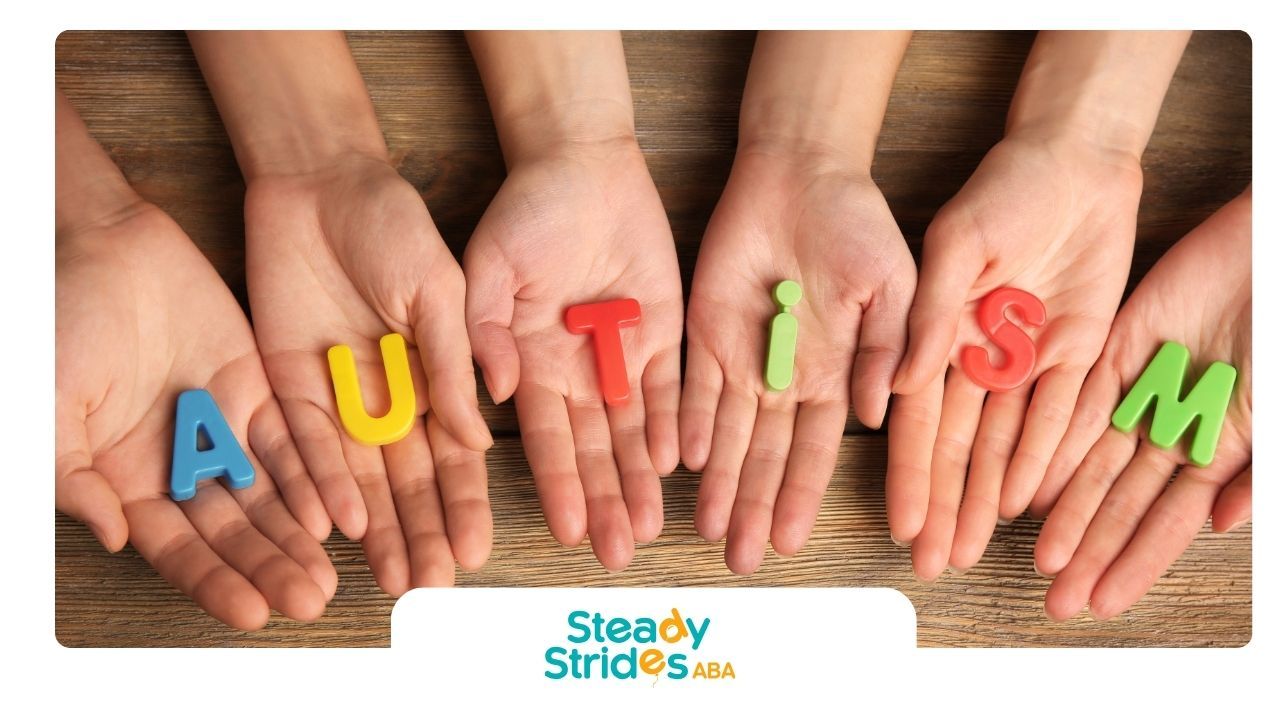Applied Behavior Analysis (ABA) therapy and Verbal Behavior (VB) therapy stand as two powerful interventions in the field of behavior analysis. While both fall under the umbrella of applied behavior analysis, they differ significantly in focus and methodology. ABA therapy centers on changing and shaping behaviors through reinforcement strategies, while verbal behavior emphasizes communication and language acquisition. This blog explores the fundamentals, techniques, and outcomes of both therapies, empowering you to choose the right path for your child’s unique needs.
Overview of ABA and VB Therapies
Both ABA and VB therapies are evidence-based approaches designed to support individuals with autism spectrum disorder (ASD) and other developmental disorders. ABA therapy, established in the 1960s, takes a systematic approach to behavior analysis, targeting a broad range of challenges. It aims to increase desirable behaviors while decreasing disruptive ones to promote independence in daily living. VB therapy, introduced later, focuses primarily on equipping children with functional communication tools to reduce frustration and foster social interactions.
Though VB therapy stems from ABA principles, its narrower focus on verbal operants like requests (mands), labeling (tacts), and conversational responses (intraverbals) sets it apart. ABA programs often incorporate VB techniques for language enhancements, demonstrating their complementary nature. Both therapies emphasize individualized strategies, ensuring tailored interventions based on the unique needs and goals of the individual.
Defining ABA (Applied Behavior Analysis) Therapy
Applied Behavior Analysis (ABA) therapy is a scientifically grounded approach focusing on behavior analysis to improve specific skills and promote successful outcomes. By utilizing principles of learning, ABA aims to reinforce desirable behaviors while minimizing undesirable ones. Certified behavior analysts employ systematic techniques, such as discrete trial training and errorless learning, tailored to individual needs. This method is particularly beneficial for individuals with autism spectrum disorders, enhancing daily living skills, social interaction, and communication abilities in a supportive environment.
Understanding VB (Verbal Behavior) Therapy
Verbal Behavior (VB) therapy revolves around enhancing communication skills through structured interactions and guiding individuals towards functional language use. The core principle focuses on teaching verbal operants, which are essential for effective social interaction. By utilizing positive reinforcement and naturalistic methods, this therapy encourages language acquisition tailored to individual needs. With a friendly and supportive environment, clients can engage in meaningful exchanges, ultimately improving their overall quality of life while developing vital daily living skills and social competencies.
Core Components and Techniques of ABA Therapy
ABA therapy comprises numerous techniques designed to reshape behaviors and enhance skills. Among its core components are generalization, enabling children to apply learned behaviors across different settings, and individualization, tailoring programs to their specific needs. These elements ensure that ABA interventions remain effective and adaptable.
In addition, reinforcement plays a central role in ABA therapy by encouraging desirable behaviors while discouraging disruptive ones. The principles are applied consistently within therapy sessions, yielding durable behavioral improvements that impact the child’s quality of life positively.
Key Techniques Used in ABA
ABA programs employ multiple evidence-based techniques, including discrete trial training (DTT), errorless learning, and natural environment teaching. DTT involves breaking skills into small, manageable tasks taught individually, using repetitive trials for mastery. This focused learning technique is ideal for teaching foundational skills, such as following directions or answering questions.
Errorless learning is another effective strategy used in ABA therapy. With immediate prompts provided after a task instruction, it guarantees correct responses. Gradually, prompts are diminished, enabling independent success. Errorless learning fosters confidence, reduces frustration, and promotes retention.
Additionally, ABA therapy makes use of natural environment teaching (NET), where skills are taught in everyday settings rather than clinical environments. For example, encouraging social interaction during playtime provides a meaningful learning experience. By combining structured methods with real-life applications, ABA programs deliver holistic support for children with autism spectrum disorder.
Role of Reinforcement in ABA
Positive reinforcement is central to ABA principles, making desirable behaviors more likely to reoccur. Rewards like praise, tokens, or extra playtime reinforce actions such as completing tasks or showing kindness, shaping the child’s behavioral patterns positively. The systematic use of positive reinforcement fosters motivation and builds trust between the therapist and the child.
ABA intervention also addresses undesirable behaviors using consequences or alternative reinforcements. For instance, disruptive actions might lead to withheld privileges, encouraging behavioral correction. Moreover, reinforcement plans are highly individualized, ensuring alignment with the child’s interests and goals.
Implementing reinforcement consistently across therapy sessions and daily routines enhances its effectiveness. This collaboration between therapists, parents, and educators ensures that targeted behavior improvements remain consistent, supporting the child in both clinical and natural settings.
Fundamental Elements of VB Therapy
VB therapy thrives on its structured emphasis on language development through functional communication. It focuses on verbal operants like mands (requests) and tacts (labels), which serve specific purposes in everyday interactions. This targeted approach stands apart from broader ABA strategies.
Additionally, VB therapy employs the concept of naturalistic reinforcement, where rewards tie directly to real-life contexts, making learning feel intrinsic and purposeful. Together, these elements empower children to communicate their needs effectively while enhancing their overall social interaction abilities.
How Communication Skills are Developed in VB
VB therapy directly addresses challenges in communication skills by systematically teaching language as a tool. The first focus is on mands—requests that allow children to communicate their needs. For example, saying “juice” to receive a drink reinforces the word’s purpose, developing functional communication.
Over time, VB therapy broadens its goals to include tacts (labels) and intraverbals (conversational responses). This gradual deepening of language development builds a comprehensive communication system. Sessions often incorporate playful activities and varied contexts to keep children engaged and motivated.
The approach also teaches social interaction, such as answering questions or joining group activities effectively. By prioritizing meaningful, real-world applications of language, VB therapy goes beyond traditional rote learning, enabling children to connect with their surroundings confidently.
Importance of Motivation in VB
Motivation is the driving force behind the verbal behavior approach. VB therapy prioritizes reinforcing requests and interactions that align with the child’s interests, keeping their engagement levels high. Words tied directly to desired outcomes foster a sense of accomplishment and curiosity.
For example, a child eager for a toy may learn to say “ball,” motivating them to use language naturally. Therapists integrate rewards in every session, ensuring that children experience consistent success. This builds trust and establishes therapy as a positive experience.
Ultimately, VB therapy’s primary focus remains ensuring that children associate language with meaningful outcomes. By nurturing enthusiasm and reinforcing communication attempts, the approach effectively reduces frustration associated with barriers in communication and fosters long-term progress.
Comparing ABA and VB Therapy: Which is More Effective for Your Child?
Choosing between ABA and VB therapy often depends on the specific challenges and goals of the child. ABA therapy offers a flexible, comprehensive framework for addressing behavioral and social challenges, making it ideal for children needing support in multiple areas.
In contrast, VB therapy’s language-centric focus benefits children struggling with verbal skills or needing help with functional communication. For families seeking broader support or tailored interventions, combining elements of both therapies may ensure optimal growth and developmental outcomes.
Situational Suitability of ABA vs. VB
The choice between ABA and VB therapy must reflect individual needs and situational suitability. ABA is better for addressing diverse challenges like aggression or difficulty in daily living, while VB suits scenarios where language development is a priority.
Long-term Benefits and Outcomes
ABA therapy lays the groundwork for desirable behaviors and skill development sustained far beyond the sessions. Long-term benefits include improved communication, social abilities, and greater independence. These advancements significantly enhance the individual’s quality of life.
VB therapy’s focus on language development also translates into meaningful interaction skills, empowering children to communicate their needs effectively. This forms a vital foundation for emotional regulation and smoother social engagement.
Ultimately, combining therapies may deliver the most enduring outcomes, demonstrating profound growth across various developmental domains. Research continues to show consistent benefits in intellectual progress, communication abilities, and adaptive skills that drastically uplift individuals’ lives.
Conclusion
In conclusion, understanding the differences between ABA and VB therapy is crucial for choosing the best approach to support your child's development. Both therapies have unique strengths and can be tailored to meet individual needs, ensuring that children receive the appropriate support they require for their growth. By considering your child’s specific circumstances, learning preferences, and communication abilities, you can make a more informed decision about which therapy may be most effective. Remember, the ultimate goal of both ABA and VB therapy is to enhance your child’s skills and foster a brighter future. If you have more questions or need guidance in making this important decision, we invite you to reach out for more information or professional consultation. Your child's well-being starts with informed choices!
Frequently Asked Questions
What are the primary goals of ABA Therapy?
Yes, VB therapy can support children without verbal skills by encouraging nonverbal communication like sign language or gestures. This approach ensures a supportive environment where skill development leads to functional communication over time.
Can VB Therapy be used for children without verbal skills?
Describe the item or answer the question so that site visitors who are interested get more information. You can emphasize this text with bullets, italics or bold, and add links.How long does each therapy take to show improvements?
Describe the item or answer the question so that site visitors who are interested get more information. You can emphasize this text with bullets, italics or bold, and add links.













